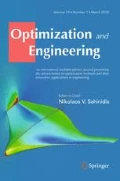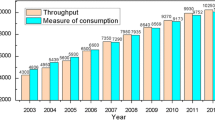Abstract
This paper presents a state-of-the-art overview of water and energy optimisation methods with applications to Kraft pulp mills. The main conclusions are highlighted, and several research gaps are identified and proposed for future research. Kraft processes have the potential to be adapted to biorefineries for producing biofuels and other high-value products from wood biomass. Biorefineries enable opportunities to increase the revenue of the process, reduce fossil fuels usage and greenhouse gas emissions. However, to ensure an effective Kraft process transformation, the existing mill infrastructure needs to be consolidated. In this sense, the water system, the heat exchanger network and the utility system should all be optimised together. A series of systematic methods (process integration-conceptual and mathematical programming) have been identified in the literature, along with the results of several case studies that reduce water and energy consumption in Kraft processes. Initial studies in this field considered and solved separate water and energy integration problems, but recent works have been focused on the development of methods for combined water and energy integration and their application to various processes. Typical savings lead to freshwater consumption decreases between 20 and 80% and energy consumption reductions between 15 and 40%.





Similar content being viewed by others
References
Ahmetović E, Ibrić N, Kravanja Z, Grossmann IE (2015) Water and energy integration: a comprehensive literature review of non-isothermal water network synthesis. Comput Chem Eng 82:144–171. https://doi.org/10.1016/j.compchemeng.2015.06.011
Ahmetović E, Ibrić N, Kravanja Z, Grossmann IE (2020a) A mathematical programming approach for water and energy optimisation: a case study of a kraft pulp mill. In: The 4th Sustainable Process Integration Laboratory Scientific Conference, Energy, Water, Emission & Waste in Industry and Cities, Online-Virtual Conference, SPIL2020.0226
Ahmetović E, Kravanja Z, Ibrić N, Grossmann IE (2020b) A review of recent developments of water and energy optimisation methods applied to pulp and paper mills. In: The 4th South East European Conference on Sustainable Development of Energy, Water and Environment Systems, SEE.SDEWES2020–0188–1–12, Sarajevo, Bosnia and Herzegovina
AMPL, Streamlined modeling for real optimization, AMPL Optimization Inc., Mountain View, CA, USA. https://ampl.com/. Accessed 10 April 2020
Alén R (2015) Chapter 3A - pulp mills and wood-based biorefineries. In: Pandey A, Höfer R, Taherzadeh M, Nampoothiri KM, Larroche C (eds) Industrial biorefineries & white biotechnology. Elsevier, Amsterdam, pp 91–126
Atkins M, Walmsley M, Morrison A, Neale J (2012) Process integration in pulp and paper mills for energy and water reduction - a review. Appita Ann Conference 65:299–306
Bajpai P (2018) Biermann’s Handbook of Pulp and Paper, 3rd edn. Elsevier, Oxford
Bakhtiari B, Pylkkanen V, Retsina T (2015) Pinch Analysis – An Essential Tool for Energy Optimization of Pulp and Paper Mills O Papel 76:51–54
BALAS, Conceptual Process Design, VTT Technical Research Centre of Finland Ltd, Espoo, Finland, https://www.simulationstore.com/balas, [Accessed: 10-April-2020].
Bonhivers J-C, Stuart PR (2013) 25 - Applications of process integration methodologies in the pulp and paper industry. In: Klemeš JJ (ed) Handbook of process integration (PI). Woodhead Publishing, Sawston, pp 765–798. https://doi.org/10.1533/9780857097255.5.765
Budak Duhbacı T, Özel S, Bulkan S (2021) Water and energy minimization in industrial processes through mathematical programming: A literature review. J Clean Prod 284:124752. https://doi.org/10.1016/j.jclepro.2020.124752
CADSIM Plus, Pulp & Paper, Aurel Systems Inc, Burnaby, BC, Canada https://www.aurelsystems.com/pulp-paper/, [Accessed: 10-April-2020].
Chew IML, Foo DCY, Bonhivers J-C, Stuart P, Alva-Argaez A, Savulescu LE (2013) A model-based approach for simultaneous water and energy reduction in a pulp and paper mill. Appl Therm Eng 51:393–400. https://doi.org/10.1016/j.applthermaleng.2012.08.070
Chin HH, Foo DCY, Lam HL (2019) Simultaneous water and energy integration with isothermal and non-isothermal mixing – A P-graph approach Resources. Conserv Recycl 149:687–713. https://doi.org/10.1016/j.resconrec.2019.05.007
Floudas CA, Ciric AR (1989) Strategies for overcoming uncertainties in heat exchanger network synthesis. Comput Chem Eng 13:1133–1152. https://doi.org/10.1016/0098-1354(89)87017-6
General Algebraic Modeling System (GAMS), GAMS Development Corp., Fairfax, Virginia, USA, GAMS Software GmbH, Frechen, Germany. https://www.gams.com/. Accessed 10 April 2020
Ghezzaz H, Bernier É, Savulescu L, Bédard S Data-driven process modeling and optimization for operation and design improvement: an application for pulp&paper industry. In: Foundations of Computer-Aided Process Design (FOCAPD), Copper Mountain Resort Colorado, 2019.
Ibrić N, Ahmetović E, Kravanja Z (2016) Mathematical programming synthesis of non-isothermal water networks by using a compact/reduced superstructure and an MINLP model. Clean Technol Environ Policy 18:1779–1813. https://doi.org/10.1007/s10098-016-1152-9
Ibrić N, Ahmetović E, Kravanja Z, Maréchal F, Kermani M (2017) Simultaneous synthesis of non-isothermal water networks integrated with process streams. Energy 141:2587–2612. https://doi.org/10.1016/j.energy.2017.07.018
Kermani M, Kantor I, Maréchal F (2018a) Synthesis of heat-integrated water allocation networks: A meta-analysis of solution strategies and network features. Energies 11:1158. https://doi.org/10.3390/en11051158
Kermani M, Kantor ID, Maréchal F (2019a) Optimal design of heat-integrated water allocation networks. Energies 12:2174
Kermani M, Kantor ID, Wallerand AS, Granacher J, Ensinas AV, Maréchal F (2019b) A holistic methodology for optimizing industrial resource efficiency. Energies 12:1315. https://doi.org/10.3390/en12071315
Kermani M, Périn-Levasseur Z, Benali M, Savulescu L, Maréchal F (2017a) A novel MILP approach for simultaneous optimization of water and energy: application to a Canadian softwood Kraft pulping mill. Comput Chem Eng 102:238–257. https://doi.org/10.1016/j.compchemeng.2016.11.043
Kermani M, Wallerand AS, Kantor ID, Maréchal F (2017b) A hybrid methodology for combined interplant heat, water, and power integration. In: Espuña A, Graells M, Puigjaner L (eds) Computer aided chemical engineering, vol 40. Elsevier, pp 1969-1974. https://doi.org/10.1016/B978-0-444-63965-3.50330-5
Kermani M, Wallerand AS, Kantor ID, Maréchal F (2018b) Generic superstructure synthesis of organic Rankine cycles for waste heat recovery in industrial processes. Appl Energy 212:1203–1225. https://doi.org/10.1016/j.apenergy.2017.12.094
Keshtkar M, Ammara R, Perrier M, Paris J (2016) Thermal energy efficiency analysis and enhancement of three canadian kraft mills. J Sci Technol Forest Products Process 5:24–60
Klemeš JJ, Kravanja Z (2013) Forty years of heat integration: pinch analysis (PA) and mathematical programming (MP). Curr Opinion Chem Eng 2:461–474. https://doi.org/10.1016/j.coche.2013.10.003
Kramer KJ, Masanet E, Xu T, Worrell E (2009) Energy efficiency improvement and cost saving opportunities for the pulp and paper industry, An ENERGY STAR® guide for energy and plant managers, Energy analysis department, Environmental energy technologies division, Ernest Orlando Lawrence Berkeley National Laboratory, University of California, Berkeley, CA.
Leewongwanawit B, Kim J-K, Smith R (2004) Design and optimisation of combined water and energy systems. In: Barbosa-Póvoa A, Matos H (eds) Computer aided chemical engineering, vol 18. Elsevier, Amsterdam, pp 439–444
LINGO 19.0, Optimization Modeling Software for Linear, Nonlinear, and Integer Programming, LINDO Systems, Inc., Chicago, IL, USA, https://www.lindo.com/index.php/products/lingo-and-optimization-modeling, [Accessed: 10-April-2020]
Linnhoff B, Hindmarsh E (1983) The pinch design method for heat exchanger networks. Chem Eng Sci 38:745–763. https://doi.org/10.1016/0009-2509(83)80185-7
Lovelady EM, Halwagi ME, Krishnagopalan GA (2007) An integrated approach to the optimisation of water usage and discharge in pulp and paper plants. Int J Environ Pollut 29:274–307
Mahmoudkhani M, Berntsson T (2012) Methodologies developed and applied in process integration studies for the Swedish Kraft pulp and paper industry: a review. In: Stuart PR, El-Halwagi MM (eds) Integrated biorefineries design, analysis, and optimization. CRC Press, Taylor & Francis Group, New York, pp 349–368
Martínez-Patiño J, Picón-Núñez M (2011) Retrofit approach for the reduction of water and energy consumption in pulp and paper production processes. In: Broniewicz E (ed) Environmental management in practice. IntechOpen, London, pp 247–266
Mateos-Espejel E, Marinova M, Bararpour S, Paris J (2010) Energy implications of water reduction strategies in kraft process. Part I: Methodol Pulp Paper Can 111:34–37
Mateos-Espejel E, Marinova M, Bararpour S, Paris J (2010) Energy implications of water reduction strategies in kraft process. Part II: Results Pulp Paper Can 111:38–41
Mateos-Espejel E, Savulescu L, Maréchal F, Paris J (2011) Base case process development for energy efficiency improvement, application to a Kraft pulping mill. Part II: Benchmarking Anal Chem Eng Res Design 89:729–741. https://doi.org/10.1016/j.cherd.2010.09.013
Mateos-Espejel E, Savulescu L, Maréchal F, Paris J (2011) Unified methodology for thermal energy efficiency improvement: application to Kraft process. Chem Eng Sci 66:135–151. https://doi.org/10.1016/j.ces.2010.09.032
Mateos-Espejel E, Savulescu L, Paris J (2011) Base case process development for energy efficiency improvement, application to a Kraft pulping mill. Part I: Defin Charact Chem Eng Res Design 89:742–752. https://doi.org/10.1016/j.cherd.2010.09.012
Nordman R, Berntsson T (2006) Design of Kraft pulp mill hot and warm water systems-A new method that maximizes excess heat. Appl Therm Eng 26:363–373. https://doi.org/10.1016/j.applthermaleng.2005.06.001
Parthasarathy G, Krishnagopalan G (2001) Systematic reallocation of aqueous resources using mass integration in a typical pulp mill. Adv Environ Res 5:61–79. https://doi.org/10.1016/S1093-0191(00)00043-5
Sahinidis NV (2019) Mixed-integer nonlinear programming 2018. Optim Eng 20:301–306. https://doi.org/10.1007/s11081-019-09438-1
Särkkä T, Gutiérrez-Poch M, Kuhlberg ME (2018) Technological transformation in the global pulp and paper industry 1800–2018, comparative perspectives. Springer Nature Switzerland AG, Cham, Switzerland
Savulescu EL, Alva-Argaez A (2013) 15 - process integration concepts for combined energy and water integration. In: Klemeš JJ (ed) Handbook of process integration (PI). Woodhead Publishing, Sawston, pp 461–483. https://doi.org/10.1533/9780857097255.4.461
Savulescu L, Kim J-K, Smith R (2005a) Studies on simultaneous energy and water minimisation-Part II: Systems with maximum re-use of water. Chem Eng Sci 60:3291–3308. https://doi.org/10.1016/j.ces.2004.12.036
Savulescu L, Poulin B, Hammache A, Bédard S, Gennaoui S (2005b) Water and energy savings at a Kraft paperboard mill using process integration. Pulp Paper Can 106:29–31
Savulescu LE, Alva-Argaez A (2008) Direct heat transfer considerations for improving energy efficiency in pulp and paper Kraft mills. Energy 33:1562–1571. https://doi.org/10.1016/j.energy.2008.07.015
Sun M, Wang Y, Shi L, Klemeš JJ (2018) Uncovering energy use, carbon emissions and environmental burdens of pulp and paper industry: a systematic review and meta-analysis. Renew Sustain Energy Rev 92:823–833. https://doi.org/10.1016/j.rser.2018.04.036
Towers M (2005) Energy reduction at a Kraft mill: examining the effects of process integration, benchmarking, and water reduction. Tappi J 4:15–21
Trespalacios F, Grossmann IE (2014) Review of mixed-integer nonlinear and generalized disjunctive programming methods. Chem Ing Tec 86:991–1012. https://doi.org/10.1002/cite.201400037
Valmet WinGEMS, Understand and improve your process through simulation, Espoo, Finland, https://www.valmet.com/pulp/automation-for-pulp/apc-advanced-process-controls/valmet-wingems/, [Accessed: 10-April-2020]
Wang YP, Smith R (1994) Wastewater minimisation. Chem Eng Sci 49:981–1006. https://doi.org/10.1016/0009-2509(94)80006-5
Wising U, Berntsson T, Stuart P (2005) The potential for energy savings when reducing the water consumption in a Kraft Pulp Mill. Appl Therm Eng 25:1057–1066. https://doi.org/10.1016/j.applthermaleng.2004.07.023
Yee TF, Grossmann IE (1990) Simultaneous optimization models for heat integration-II Heat exchanger network synthesis. Comput Chem Eng 14:1165–1184. https://doi.org/10.1016/0098-1354(90)85010-8
Acknowledgment
The authors gratefully acknowledge the support from the programme for Scientific & Technological Cooperation between the Republic of Austria and Bosnia and Herzegovina, the Austrian Federal Ministry of Education, Science and Research (BMBWF), the Austrian Agency for International Cooperation in Education and Research (OeAD), the Ministry of Civil Affairs and the Federal Ministry of Education and Science of Bosnia and Herzegovina (Project “MoBi-WaterHeat”, No: BIH 06/2019), and the Slovenian Research Agency (Research program P2-0032 and Project J7-1816). Also, the support from the internal call for financing/co-financing projects important for the Federation of Bosnia and Herzegovina (Project No: 01-6211-1-IV/19), including the programme for Scientific and Technological Cooperation between the Republic of Slovenia and Bosnia and Herzegovina in the period 2019-2020 (Project: “SISUMP”, No: 01-1282-1/20) is gratefully acknowledged.
Author information
Authors and Affiliations
Corresponding author
Additional information
Publisher's Note
Springer Nature remains neutral with regard to jurisdictional claims in published maps and institutional affiliations.
Rights and permissions
About this article
Cite this article
Ahmetović, E., Kravanja, Z., Ibrić, N. et al. State of the art methods for combined water and energy systems optimisation in Kraft pulp mills. Optim Eng 22, 1831–1852 (2021). https://doi.org/10.1007/s11081-021-09612-4
Received:
Revised:
Accepted:
Published:
Issue Date:
DOI: https://doi.org/10.1007/s11081-021-09612-4




